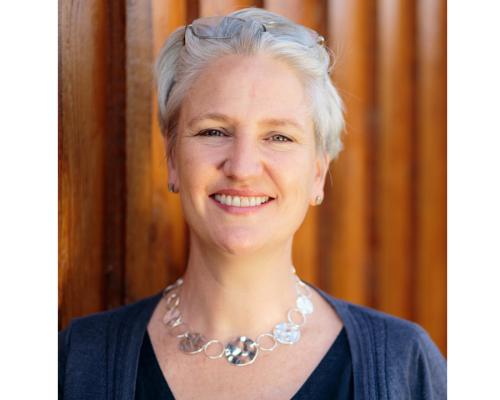Bringing the help to home
Most severe, even psychotic, mental illness can be helped more effectively at home than in hospital. Professor Marcellino Smyth illustrates how home treatment services work.
LATE one Saturday afternoon I received a phone call from the local police station. A young woman had been brought in behaving oddly, struggling and very frightened, and the police surgeon thought she was psychotic and needed psychiatric hospitalisation. I headed for the police station where I found a young woman in her mid-20s clearly in a state of extreme panic. Apparently she had had a panic attack in a taxi, was too terrified to get out and became aggressive with the taxi driver when he tried to persuade her. Misreading the situation, he drove her to the police station.
When I arrived she was restless, shaking, breathing very quickly and saying that she felt she was going to die. She said she had cramps in her stomach and that her body felt as if it didn't belong to her, and other people didn't seem real. I learned that she had been suffering panic attacks for the previous few months, ever since her ex-husband had started threatening to try and get custody of their children. Two weeks previously, to help her anxiety, her GP had started her on an SSRI (selective serotonin reuptake inhibitor) which can sometimes exacerbate anxiety and panic to an intolerable level in the first 10 days.

I arranged for two members of the home treatment team to join me at the police station to make an assessment, where we agreed on short term medication to dampen the anxiety, and then to take her home and spend time with her offering counselling and support and assessing the background problems. Without the home treatment team for the police surgeon to call on, she might well have ended up in a psychiatric hospital.
Home treatment in psychiatry is a service for people who are seriously mentally ill and/or who are otherwise very likely to be admitted to hospital, voluntarily or compulsorily. It involves crisis intervention and also the management of crisis or relapse of severe mental illness, as far as possible all in the community.
One of the first 24 hour routine home treatment services to be established in the UK was in North Birmingham, where I work. The home treatment team here serves a population of 150,000 (divided into three catchment areas, each headed by a different consultant psychiatrist), and is a 24 hour seven day week service. We are an integral part of the overall provision for psychiatric care, working closely with community psychiatric nurses, keyworkers in the community mental health team and GPs, and fill the gap between the community mental health teams and the inpatient units.
The team comprises seven community psychiatric nurses, two social workers, two support workers and one of the three consultant psychiatrists and medical teams. Doctors are involved in all assessments including out of hours, and this usually means senior doctors such as consultants or senior clinical medical officers.
Home treatment offers a rapid response to urgent referrals, a gatekeeping role to prevent admission if safe and appropriate, and acute psychiatric care based in the individual's home, which may involve two team members in several visits a day, if necessary, or fewer but lengthier stays of sometimes up to three hours. Treatments include crisis intervention, practical support and problem solving, advising and supporting families, counselling, psychological support and supervising medication.
Such services are not yet widely available in the UK although home treatment has recently been endorsed in the National Service Framework for Mental Health as an important element of progressive community care. In North Birmingham we are convinced that it is an extremely useful alternative, a view borne out by numerous studies to date. I aim in this article to give a flavour of this work by describing a few of the kind of scenarios we might face in a typical week and how we respond to them. The scenarios are based on actual cases with details changed to avoid identification.
John is found knocking on the church door
Monday regularly begins with a home treatment review meeting attended by the team and the doctors from my catchment area (my junior doctor, senior clinical medical officer and myself as consultant). We discuss the progress of established cases and review our treatment strategies in the context of emerging impressions, ongoing assessment of patients' needs and their clinical progress. We also arrange joint reviews for each patient for the week ahead. Of the 20 active cases which the team is handling, five are from our area; eighty per cent involve serious mental illness including psychosis, schizophrenia, manic depression and severe depression.
Today we spend some considerable time on a new case taken on in the early hours of Saturday. John had been brought to an accident and emergency department by the police because he was found in an agitated state, walking around the city on a cold night without a coat or jacket, and repeatedly knocking on the door of a city centre church. He had not been drinking or using drugs. When the home treatment team arrived to carry out an assessment they learned that John was a 30 year old restaurant manager from Liverpool who had driven to Birmingham earlier that day intending to visit his parents. He was elated in mood, talking quickly and, instead of arriving at his parents' home, had been going into churches wanting to line up the seats so as to prevent evil.
The clinical impression of the two home treatment nurses and the on-call psychiatrist was that John was suffering from mania (a state of elevated, expansive mood seen in manic-depressive conditions). They called his parents who came to the accident and emergency department and said that John had had two previous breakdowns in his 20s involving admission to hospital. They were very protective of him and willing to try to support him at home, with the help of the home treatment team. A difficulty, however, was that John did not wish to take the recommended medication because he felt unusually happy and did not think that he was unwell. But, as his main concern was not to have to go to hospital again, he was willing to see how things went with the home treatment team.
By Monday, the immediate issue is whether home treatment is sustainable. With the aid of two lengthy visits from the two home treatment nurses, John's parents have spent the weekend staying close to John's side, talking with him and encouraging him to stay put. They have found it difficult to deal with his restless overactivity and changing plans. He has not been sleeping and wanted to visit old friends and to go to church. At times he has not been making sense and has been preoccupied with religious matters. The team visited twice in the day on Sunday and again in the evening and eventually, after much negotiation, John agreed to take medication. He was eager to talk about his religious beliefs and because these were so exciting and special to him, reacted irritably when the nurses expressed their view that many of his concerns and grandiose plans reflected mania.
Challenging John's beliefs
On a visit later on Monday morning I find John is a charming, intelligent and engaging man who is immediately responsive when I begin talking back to him as quickly as he is speaking to me. Feeling that we are in tune with him, he is more confident that we understand his concern to get back to the church to prevent evil. The traditional view in psychiatry is that psychotic beliefs should not be colluded with. But I think it is important to discuss the beliefs, so as to foster engagement.
In this instance, we are able to deflect action by quiet challenging. "So you feel you have to line up the chairs in a particular way. Why do you need to line up the chairs? Why that angle? What type of evil do you want to prevent? Where did you get that idea? Why do you think evil could be prevented by that alignment?" and so forth.
John is also complaining of serious problems being made for him in his job and with his girlfriend in Liverpool. When someone is psychotic it is always difficult to know whether the complained-of life circumstances are real or a symptom of paranoia. We have to set aside tackling his life concerns for the time being, till we gain sufficient control of his symptoms with medication to prevent his deterioration. We also need to help his parents achieve an adequate level of supervision during this process, which means John has to remain at their home. John reluctantly agrees. As he is worried about his car which is still in the city, one of the nurses drives his father to collect it and arranges for him to keep the keys for John.
We agree provisionally to continue home treatment, depending upon how things go (both John and his parents are still keen to avoid another hospital admission), and plan three daily visits.
Even though home treatment offers an alternative to admission, distressed psychotic patients often lack insight and initial engagement with them is a delicate business, wherever they are. Home treatment offers a little more time for this relationship building because the patient is able to retain autonomy. But medication is still usually an essential feature of treatment and, as in John's case, it can be problematic to get the levels right. In general the amount of medication required on home treatment is less than in hospital because people do not have to contend with entering a strange and sometimes disturbed environment.
Mary wants to keep her job

In the afternoon I attend a family meeting for a patient who is recovering from depression. Mary has been on home treatment for four weeks and now receives visits every second day. Her husband had suffered two minor strokes and had retired early from work. It had emerged that Mary had always had an ambivalent relationship with her husband, who had been highly controlling throughout their marriage, and she had feared that, because of his strokes, she might be forced to give up her job and stay home at his beck and call — a precipitating factor in her depression. As part of their efforts to support her the home treatment team had been trying to ensure that she received adequate support for her husband. The couple's adult daughters attend the meeting at which the social worker from the home treatment team helps sort out the couple's financial concerns and benefit issues.
Home treatment is efficient at picking up on real life social issues in their immediacy and context, as against trying to find out about them in hospital. Relatives' visits to patients and interviews with staff are an important and routine feature of conventional psychiatric practice and can generate important information, but in the home this process is more naturalistic and often more extensive and accurate.
Trouble with the landlord
The next day the team visits Ranjit, who had started on home treatment three weeks previously. Ranjit is 32, lives alone, and has a history of schizophrenia and many admissions to hospital. In the month before referral to us by her community psychiatric nurse, she had become increasingly withdrawn, staying home and avoiding her family. Ranjit often hears voices which are unpleasant to her, and regular neuroleptic medication has had only a limited impact on this problem, while also causing weight gain which worries her. In our work with Ranjit we have found that her behaviour, rather than indicating a relapse of illness, is related to difficulties with her landlord. He was responding unsympathetically to her complaints about poor and unsafe heating in her flat and, the more she complained, the more he threatened her with higher payments and suggestions that she should find somewhere else to live.
The two team members assigned to her case have been teaching Ranjit anxiety management techniques for her anxiety attacks, escorting her on shopping trips, encouraging her to visit her family again (she had by now spent two weekends with them) and undertaking advocacy with the landlord on her behalf.
Without this early intervention stimulated by the concerns of the community psychiatric nurse (her keyworker), it was likely that Ranjit would have continued to withdraw from daily life and social contacts and have deteriorated to the point of actual relapse of the primary illness. The fact that she had not gone out to collect her prescription for her regular medication further increased the high likelihood of this. Possibly, too, she might have been forced out of her accommodation, leading to delayed discharge from hospital. Such a course of events would inevitably have attracted the label of 'relapse of schizophrenia'.
"I can't go on"
Later we are asked urgently to assess for admission a 30 year old man who is anxious and depressed. Aaron has had no previous involvement with psychiatric services. His wife had left him two days earlier and he had been drinking heavily since, in which heavily inebriated state his sister had found him. His mood depressed even further by the alcohol, he had announced dramatically that he could not go on, frightening her enough to summon his GP. His GP, in turn not confident that Aaron wouldn't harm himself, had called on us.
We decide that home treatment is not appropriate. We are reluctant to view his crisis in terms of mental illness but rather as an understandable reaction to distress and don't consider Aaron to be suicidal. (Sometimes, in their distress, people drinking heavily are willing some desperate course of action, such as hospitalisation, to occur. It can on occasions be very difficult to judge if they are in danger of harming themselves or others but previous history is an important guide in such cases.)The team makes arrangements for Aaron to have relationship counselling and help with his alcohol problems.
Only half of urgent cases assessed are offered home treatment. We have to focus on individuals who are otherwise likely to be admitted to hospital because of the severity and nature of their problems. Resource allocation to develop home treatment has to be at the price of some other feature of the service, and this is primarily reduced inpatient beds. Even if we could help a lot of less seriously distressed people, the home treatment team is not sustainable unless it reduces hospital admissions for severe conditions.
A crisis for Emma
The next day begins with a crisis for Emma, a 23 year old woman with depression and a history of repeated self harm who has been on home treatment for two weeks. She lives with her mother and has again been having intense thoughts about cutting her arms. She had recently started cognitive therapy for an incident of rape when she was 15, which resulted from a relationship with a much older boyfriend. Her mother had found it very difficult ever to talk about the trauma of the rape, having intensely disapproved of the relationship in the first place. The friction between the two had increased since Emma began the therapy, with her mother now further withdrawn and openly disapproving when Emma harmed or threatened to harm herself. She wanted Emma admitted to hospital. Emma felt rejected and her self esteem was low.
When we visit, Emma is ambivalent about admission. During a previous admission she had cut her wrists and ended up a compulsory patient on special observations for a week. We are concerned, however, with the difficult situation between herself and her mother at home, especially as she says she cannot guarantee that she will not resort to serious self harm. Although we feel we cannot leave her there, nor are we happy about admitting her, especially in the light of her last experience. The team arranges instead for her to go to a respite facility run by service users where a place will be available the following day. Home treatment support will be shared with the staff at the respite facility, all of whom are in recovery from mental health problems. A joint care plan is discussed and agreed. An essential requirement is that Emma has to guarantee that she will not hurt herself and, in this setting, Emma is prepared to do this.
The arrangement allows for Emma to receive additional understanding and help from the 'expertise of experience' alongside professional expertise. She receives counselling from the team which concentrates on helping her develop confidence in her ability to have other successful relationships and understand the rape in terms of her understandable immaturity and inexperience, and acknowledging how traumatic the experience had been for her.
Admission to hospital is commonly the only available resort when 'respite' is required. The notion and need for rest and getting away from stressful situations is an important one, but the benefits of hospital admission in providing this are often outweighed by the disadvantages. While patients greatly value the nursing care in acute admission wards, there can be an undue emphasis on medicalising problems into symptoms and on behavioural conformity, with restricted freedom in tense environments. Many home treatment teams have found that family sponsor homes and non—hospital respite facilities are preferable in meeting the need for respite. In crisis, control of oneself can be easily jeopardised and lost. Maintaining a degree of control and choice is facilitated by home treatment, as it is so personally tailored to individuals and their problems.
John makes progress
John is beginning to settle and talk more appropriately about the difficulties in his job. The restaurant he managed had been losing money and he had been working very long hours trying to remedy the situation entirely by himself. He had been threatened with dismissal by the owner who had not allowed him to display initiative and his own style. Having failed in a previous venture, he was very frightened of losing his career and had begun, after many years, to pray, find solace in the Bible and attend church again. He is now oversedated and his speech is slurred. We begin to taper his medication downwards.
Daily administration, supervision of medication and monitoring clinical response is a routine but skilled task undertaken by home treatment teams, just as inpatient staff carry it out in hospitals.
John receives acute home treatment for four weeks and then sees me as an outpatient for six months for follow up. He becomes manager of a smaller restaurant which he finds less stressful, and his case is transferred to psychiatric team and GP in his home area.
Fred will not open the door

In the afternoon we decide to arrange admission for Frederic, a 50 year Polish immigrant with paranoia resulting from a serious head injury 15 years ago. He lives alone and is claiming that the NHS is involved in a conspiracy against him. Seeing the letters N, H, and S on the registration plates of passing cars is, for him, proof of the conspiracy. He had initially engaged quite well with the team members, but had begun to express doubts about their true intentions during the first week. His self care and nutrition is poor and he had been losing weight. He has been getting slower and slower at opening his door when the team calls (sometimes taking 15 minutes to appear) and is now frankly refusing what he perceives as the interference of the team. He is particularly annoyed about the restoration of medication which he said he had been taking for too many years. Conversations both the night before and this morning have had to be conducted through the letterbox. The process of admission is an unhappy one, involving the police and the use of the Mental Health Act.
All mental health professionals recognise that there is a point of no return when the level of concern about someone reaches the stage of considering compulsory admission, despite all the problems and discomfort for each party that this creates. Home treatment teams are no different in this respect from conventional services, although our remit is, whenever possible, to offer a 'third way' when someone needs treatment but doesn't want hospital admission. In Frederic's case, we recognise that we are getting nowhere, and both his mental and physical health are deteriorating. Prevention of admission 'at all costs' is a dangerous ideological position as far as sound clinical care is involved and one not held by home treatment teams.
Meanings of mental illness
Home treatment, in offering an alternative response and treatment setting, emphasises certain principles and values. Staff report how the personal relationship and practical collaborative journey with people who have significant mental health problems become a highly important and rewarding element. The dialogue that develops is more flexible in respect of theoretical models and is a response to an individual's particular experience and problems, allowing especial focus on the meanings mental illness may have in the context of that person's life. We talk, for example, of voices rather than hallucinations or religious beliefs rather than delusions. With this less medicalised approach, it is easier to remove institutional and professional therapeutic constraints, and surely this is a good thing. While it is the goal in most mental health strategies to respect autonomy and enable personal empowerment, the setting, flexibility and personal tailoring which home treatment incorporates enlarge this opportunity, and allow the challenge of doing so at a highly critical juncture in a person's life.
How successful is home treatment?
OVER 25 years of research has shown home treatment to be equally as or more effective than hospital admission, and to be very significantly preferred by service users and carers. Studies of home treatment have looked mainly at patients with severe mental illness, with psychosis accounting for three quarters of cases. They show that:
- home treatment is safe, effective and feasible for up to 80 per cent of patients who might otherwise be admitted to hospital.[1,2,3,4,5,6,7,8] Five reviews have endorsed the findings. [9,10,10,12,13]
- home treatment can reduce admissions to hospital by on average 66 per cent [1—7] (the least being by 55 per cent, when based on adequately randomised controlled studies only) [10]
- home treatment can reduce length of hospital stay by up to 80 per cent.[14]
- there are lower levels of burnout and significantly higher job satisfaction in home treatment teams.[8]
This article first appeared in "Human Givens Journal" Volume 7 - No. 3: 2000
 We need your help – this article originally appeared in the Human Givens Journal which takes no advertising at all, in order to maintain its editorial independence.
We need your help – this article originally appeared in the Human Givens Journal which takes no advertising at all, in order to maintain its editorial independence.
To survive it needs new readers and subscribers – if you have found the articles, case histories and interviews on this website helpful, and would like to support the human givens approach – please take out a subscription or buy a back issue today.
References
- Stein, L I and Test, M A (1980). Alternative to mental hospital treatment. Conceptual model treatment program and clinical evaluation. Archives of General Psychiatry, 37, 392—7.
- Fenton, F R, Tessier L and Struening, E L A (1979). A comparative trial of home and psychiatric hospital care: one year follow up. Archives of General Psychiatry, 36, 1073—9.
- Pasaminick, B, Scarpetti, F R and Dinitz, S (1967). Schizophrenia in the Community: an experimental model in the prevention of hospitalisation. Appleton Century Crofts, New York.
- Hoult, J (1986). Community care of the acutely mentally ill. British Journal of Psychiatry, 149, 137—144.
- Polak, P R and Kirby, M W (1976). A model to replace psychiatric hospitals. Journal of Nervous and Mental Diseases, 162, 13—22.
- Muijen, M, Marks, I M, Connolly, J and Audini, B (1992). Home-based care versus standard hospital-based care with severe mental illness: a randomised controlled trial. British Medical Journal, 304, 749—754.
- Dean, C, Phillips, J Gadd, E M, Joseph, M and England, S (1993). Comparison of community based service with hospital based service for people with acute, severe psychiatric illness. British Medical Journal, 307, 473—6.
- Minghella, E Ford, R, Freeman, T, Hoult, J, McGlynn, P and O’Halloran, P (1998). Open All Hours: 24-hour response for people with mental health emergencies. Sainsbury Centre for Mental Health, London.
- Braun, P, Kochansky, G, Shapiro, R, Greenberg, S, Gudeman, J, Johnson, S et al (1981). Overview: deinstitutionalisation of psychiatric patients: a critical review of outcome studies. American Journal of Psychiatry, 138, 736—749.
- Kiesler, C A (1982). Mental hospitals and alternative care. American Psychologist, 37, 349—60.
- Kliuter, J (1997). In-patient treatment and care arrangements to replace or avoid it – searching for an evidence based balance. Current Opinion in Psychiatry, 10, 160—167.
- Szmukler, G I (1990). Alternatives to hospital treatment. Current Opinion in Psychiatry, 3, 273—277.
- Joy, C B, Adams, C E and Rice, K (1998). Crisis intervention for severe mental illness. In: Cochrane Collection. Cochrane Library. Issue 4. Oxford: Update Software.
- Audini, B, Marks, I M, Lawrence, R E, Connolly, J and Watts, V (1994). Home-based versus out-patient/in-patient care for people with serious mental illness. Phase II of a controlled study. British Journal of Psychiatry, 165, 204—210.
Latest Tweets:
Tweets by humangivensLatest News:
HG practitioner participates in global congress
HG practitioner Felicity Jaffrey, who lives and works in Egypt, received the extraordinary honour of being invited to speak at Egypt’s hugely prestigious Global Congress on Population, Health and Human Development (PHDC24) in Cairo in October.
SCoPEd - latest update
The six SCoPEd partners have published their latest update on the important work currently underway with regards to the SCoPEd framework implementation, governance and impact assessment.
Date posted: 14/02/2024














